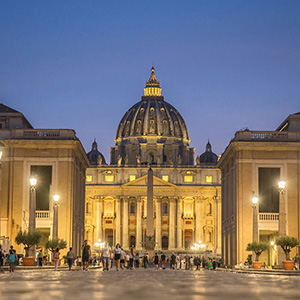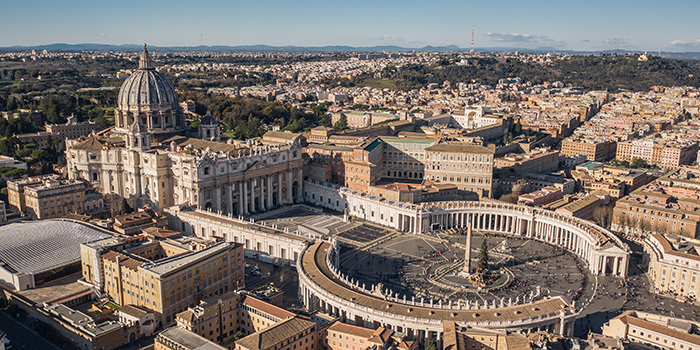Quiz Topic Sheet
Nations of the world - Vatican City
The Vatican, located in the heart of Rome, is the world's smallest independent nation, home to St. Peter's Basilica and the Sistine Chapel, as well as being the seat of the Roman Catholic Church.
Advertisement
Geography and History
- The Vatican City State is located in the heart of Rome, Italy, on the west bank of the Tiber River.
- Its official name is "Vatican City State," also known by its Latin name "Status Civitatis Vaticanæ".
- The Vatican has been associated with Vatican Hill, one of Rome's hills, since ancient times.
- The Lateran Accords signed in 1929 between Benito Mussolini and Pope Pius XI gave the Vatican the status of an independent state.
- The Vatican is the world's smallest independent and least populous nation, with an area of 0.44 km² and around 800 inhabitants.
- The head of state of the Vatican is the Pope, who is also the head of the Roman Catholic Church.
Languages and Diplomacy
- Italian is the official language of the Vatican for day-to-day business, while Latin is mainly used in liturgical contexts.
- French has been the Vatican's official diplomatic language since the 17th century.
- The Vatican's spiritual entity is known as the "Holy See," which represents the Pope and the organs of pontifical government.
Vatican Buildings and Museums
- St. Peter's Basilica, the largest church in the West, is located in the Vatican and was built to replace an old basilica.
- The Sistine Chapel, one of the Vatican Museums' chapels, is famous for its ceiling fresco by Michelangelo.
- The Vatican Museums include the Pinacoteca, which exhibits Italian religious paintings, and other museums, galleries, chapels and rooms.
- The Vatican Gardens, laid out in the 13th century, occupy a third of Vatican City and combine different garden styles.
- St. Peter's Square is an elliptical esplanade lined with colonnades designed by Bernini, with an obelisk in the center.
Religion and the Papacy
- The Vatican is the seat of the Roman Catholic Church, where the Pope exercises his ministry.
- Conclaves for the election of a new pope take place in the Sistine Chapel, and the announcement is made with white smoke and the words "Habemus papam" (We have a pope).
- The Vatican has its own Swiss Guard for the security of the Pope and Vatican City.
Culture and Art
- The Vatican Museums house important art collections, including frescoes by Michelangelo, works by Raphael and ancient sculptures.
- Vatican City is a UNESCO World Heritage Site for its artistic, cultural and architectural importance.
Miscellaneous
- The Vatican has its own national soccer team, although it is not a member of FIFA or UEFA.
- Tourism, thanks largely to the Vatican Museums, is the Vatican's main source of revenue.
- The euro has been the Vatican's official currency since 1999.
- The Vatican railroad line is the world's shortest national rail network, linking the Vatican railway station to the Rome-San Pietro railway station.
- The Italians bombed the Vatican in 1943 during the Second World War because of suspicions that Vatican Radio was sending coded messages to the Allies.
Further Information
Advertisement
Quiz questions preview
-
Who signed the Lateran Pacts for Italy, giving the Vatican City the status of an independent state?
Benito Mussolini | Francisco Franco | Emilio De Bono | Cesare Maria De Vecchi -
Who is the head of state of Vatican City?
The President of the Italian Republic | The Roman Curia | The Pope | The Mayor of Rome -
Name one of the chapels attached to the Vatican Museums.
The Sainte-Chapelle | St. Peter's Chapel | The Contarelli Chapel | The Sistine Chapel -
What can you find in Vatican City?
Hospital | Heliport | Embassy | University -
Largest church in West, its construction began in 1506 to replace old basilica with the same name.
St. Mark's Basilica | Notre-Dame Church | Sacred Heart | St. Peter's Basilica


